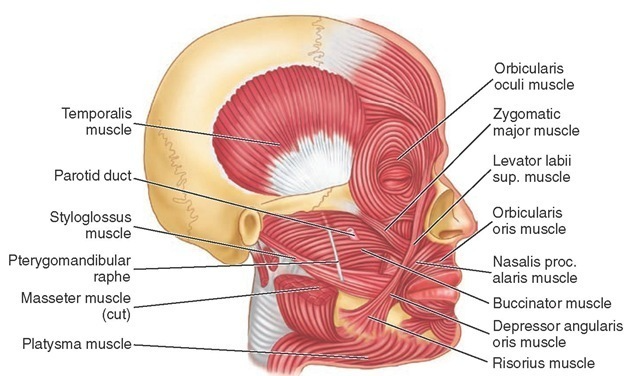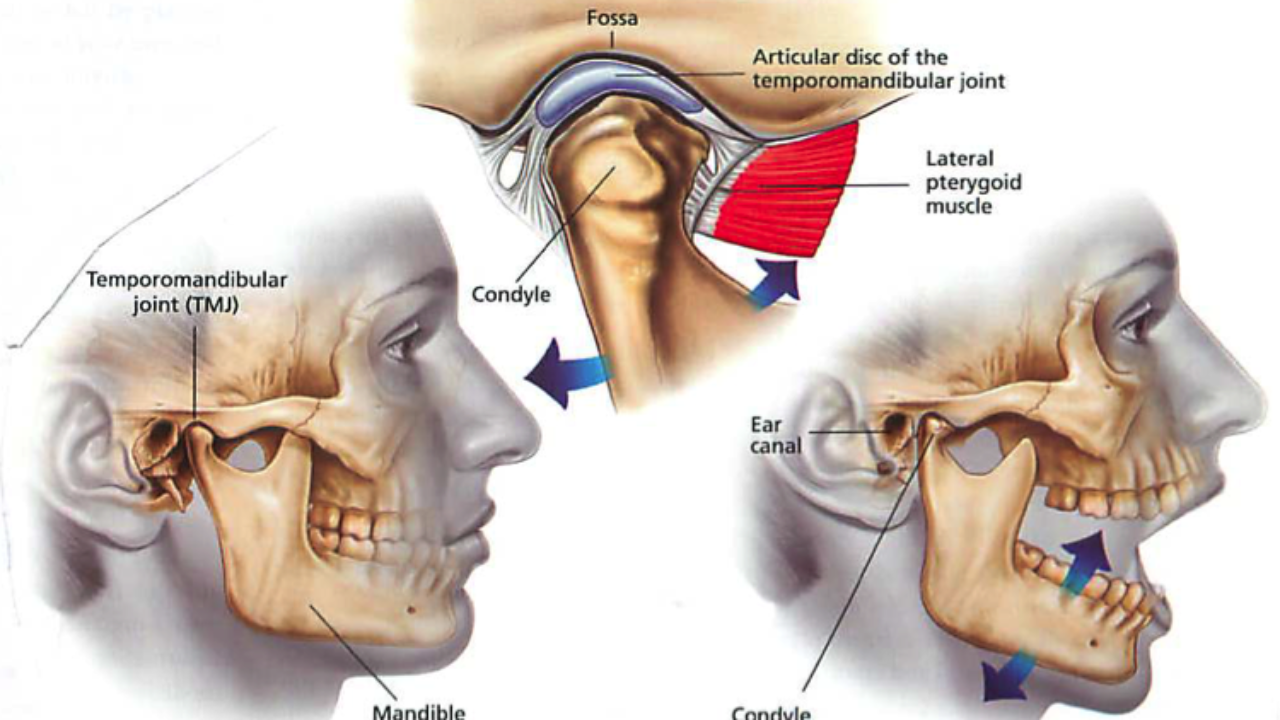What is TMD?
TMD stands for temporomandibular joint dysfunction (also known as TMJD).
TMD is an all-encompassing term for any jaw-related dysfunction causing symptoms and/or affecting your quality of life.
You do not have to experience clicking and popping in your jaw to be classified as having TMD.
So what are the different types of TMD and how do you know if you have it?
The one unifying aspect of all TMD patients is a common finding throughout this population: you either have jaw pain or jaw dysfunction of some kind (limited range of motion, difficulty chewing, etc) but what aspects of TMD you have can vary among individuals.
Myofascial (muscular) origins of TMD

A large population of TMD clients have muscular dysfunction of some kind. For some this is the sole reason for their TMJ issues and for others it’s either a contributing factor or a secondary issue. Bottom line, even if you have more of a joint-related issue, odds are there will be some muscular impairments to address as well.
This category includes muscle tension/stiffness and pain around the head/neck and jaw and even into the mid back and beyond. Muscular dysfunction in this area is often found in the form of myofascial trigger points where a knot of muscle is tender to touch and may even refer pain elsewhere. Myofascial pain is generally related to abnormal muscle activity leading to pain/dysfunction.
For TMD sufferers this is often caused by clenching, stress, and other parafunctional habits such as nail biting, cheek chewing, etc.
Myofascial pain can also start as more of a postural dysfunction, even originating in the mid back and traveling up the chain to the jaw. This is typically caused by many stressful hours at the desk/computer resulting in a muscular/mobility imbalance in the upper spine.
All of this to say, muscular tension is a very common finding for TMD patients and is effectively treated with manual therapy intervention often including dry needling, specific exercises, and education.
Bony (joint) origins of TMD

The TMJ is a joint, so there will often be joint dysfunction as well. This can include the joint not moving enough, being too mobile, having pain with movement of the joint, or most commonly, having dislocation of the disc that sits between the two bones of the joint. This is the category of TMD where clicking/popping is common and where you may feel your bite is off, you have limited ROM, or your jaw is moving side to side with opening and closing.
(Note these findings can also occur because of muscular imbalance/tightness, so leave it to your PT to diagnose for you!)
There can also be issues in the bones of the joint as well which includes arthritis/general degeneration, trauma to the area, or a congenital abnormality of some kind. For this diagnosis, imaging is often used to determine the extent of the bony dysfunction and an oral appliance is often helpful. Physical therapy can also reduce pain of degenerated TMJs. PT is also highly effective for addressing disc dysfunctions, especially when treated early.
The bottom line is, there are many contributing factors to the presentation of TMD, and a trained PT can help you determine which factors your specific case involves. Many of these symptoms can be treated to PT alone, or we can help send you in the right direction for full resolution!
About the author:

Dr. Samantha Dove is originally from San Antonio, Texas and has recently moved to Cincinnati from Atlanta, GA with her husband Sam and their dog Koda.
She was a springboard and platform diver for the University of Texas at Austin and has been a Doctor of Physical Therapy for over 5 years. Dr. Dove treats all orthopedic conditions with special interest in the spine, chronic pain, vestibular, and TMJ/TMD populations. She has her Manual Therapy Certification through the University of St. Augustine (USA) and has extensive dry needling training with KinetaCore.
Dr. Dove highly values continuing education in a variety of physical therapy topics but has taken special interest in the CranioFacial courses through USA to advance her TMD treatment skills. Health and wellness are a natural interest of hers in her personal life including participating in activities such as yoga, running, gardening, reading, cooking, family walks at Eden Park and all things self care! She is very excited to explore Cincinnati and to be joining the team at Anchor Wellness Center!


